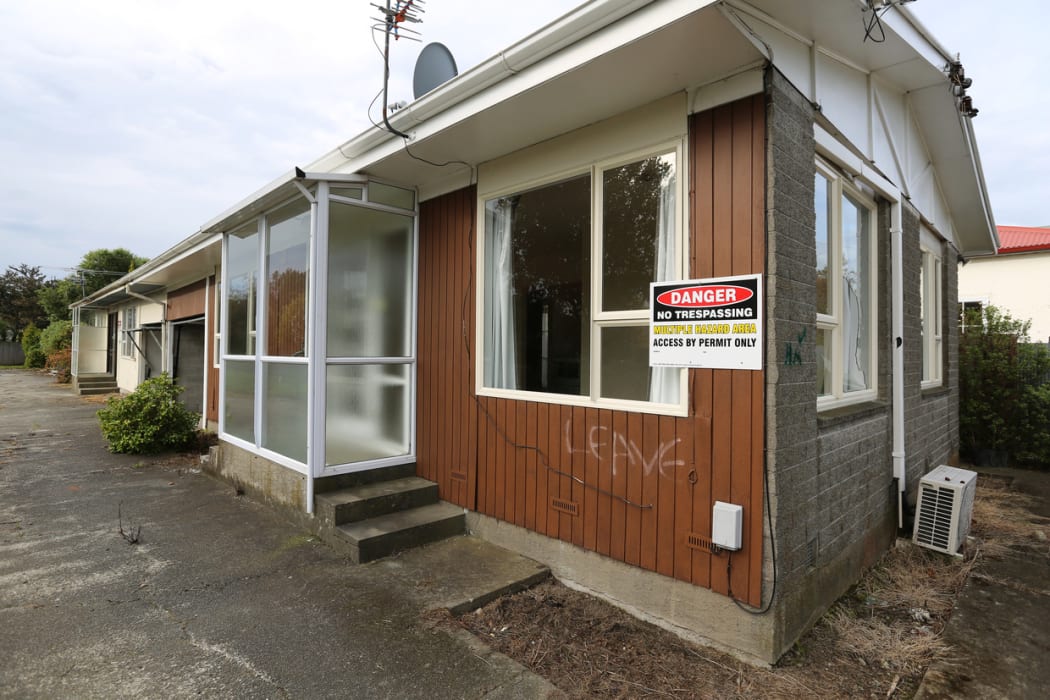Thousands of Christchurch homeowners may be being short changed on their earthquake insurance payouts.
Proposed new guidelines for surveyors seen by Radio New Zealand state property boundaries should revert to their pre-quake position, even if land movement has pushed them onto neighbouring land.

Photo: RNZ / Diego Opatowski
It may mean people who have already settled with insurers, and now have to to put their homes back where they're legally supposed to be, will have to foot the bill themselves.
Surveyor Adrian Cowie said the new guidelines have come too late for the thousands of people whose earthquake-damaged homes have already been rebuilt using incorrect information about where a property's true boundary actually sits.
"If in a rebuild the neighbour is getting a new house built, they could find your house is actually in to their property and it means that your house will have to be moved back into its correct position."
Mr Cowie says with up to 30,000 homes affected by so-called lateral spread, the problem is significant, and one Land Information New Zealand (LINZ) should not have taken four years to clarify.
"We've got a situation that I believe is unprecedented in New Zealand. We've got new houses and new commercial buildings that have been built in Christchurch in the last four years that are over the boundaries and are not complying with the legal titles."
Surveyor-General Mark Dyer, who works within LINZ, said ongoing land movement prevented the guidelines from being drawn up any earlier but the issue was now being dealt with with urgency.
"We're working with councils and other agencies to ensure that there's an understanding that legal boundaries may be different from where people's fences are. And we're mindful that there are consequences to that movement."
Mark Dyer was not able to say exactly how many properties were affected.

Hugo Kristinsson and partner Emma Magmusdottir's house shifted in the quakes. Photo: RNZ / Conan Young
"Some areas in the east, particularly those close to the river and other watercourses have moved substantially, up to 300 millimetres and greater in some cases."
Who pays?
Hugo Kristinsson's property on the edge of the Christchurch estuary has shifted towards the water.
"My fence is now a metre into a reserve here and at any time I can be challenged and told, you're on a reserve, you've got to move your boundary here."
Mr Kristinsson has yet to settle his earthquake claim and wants his insurer to take into account the amount it will cost to move his fences, driveway and house, back to where it is legally required to be.
Seamus O'Cromtha's property has also shifted towards the estuary. "I have lost a metre of property on one side and my next door neighbour has gained a metre of my property on their side," he said.
Mr O'Cromtha' said he would insist the cost associated with having to put his house back where it belongs are picked up by his insurer.
But Insurance Council chief executive Tim Grafton doubts many policies would cover the cost of relocating a house that was found to be impinging on a neighbour's boundary.
"I don't have any legal advice on this, but our immediate view would be that lateral spread is land damage and that is the responsibility of EQC. The insurer does not insure the land."
A spokesperson for EQC says it was not commenting on the new guidelines until it's had time to consider their implications.

